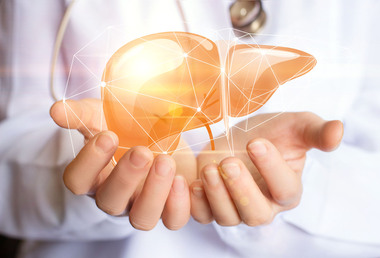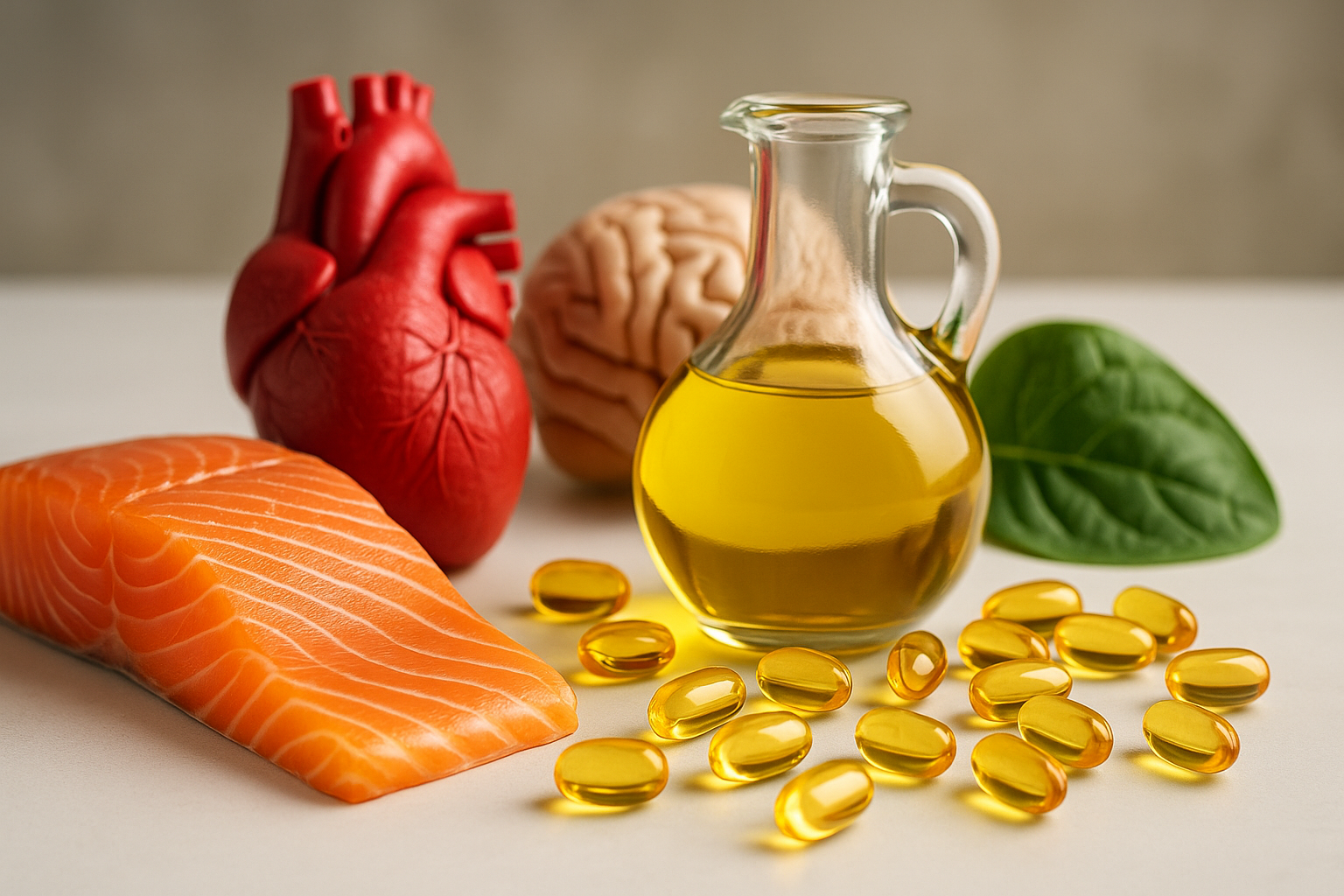
The liver is the central organ of metabolism. Its most important tasks are the production of vital proteins, the utilisation of food components (for example the storage of glycogen and vitamins), the production of bile and the associated breakdown and excretion of metabolic products, medicines and toxins. Therefore, we should provide the liver with sufficient care and support and pamper the organ and the associated important energy and fat metabolism specifically with various natural substances from Mother Nature's garden.
It is not pretty, the first (and perhaps best known) literary mention of the liver. Prometheus from the ancient dynasty of the Titans deceives Zeus, the father of the gods. He leaves him only the worthless parts of the sacrificial animal and keeps the edible meat for the humans, since they are his charges. As punishment for this, the enraged Zeus denies the mortals possession of the fire. Prometheus then steals the fire from the gods and brings it to the humans. Because of this, he is bound by order of the father of the gods and forged in the wasteland of the Caucasus Mountains. There, an eagle regularly visits him and feeds on his liver, which is then constantly renewed. Only after a long time does the demigod Heracles release the Titan from this torment by killing the eagle with an arrow. Finally, Prometheus is pardoned by Zeus and regains his freedom.
But why the liver in particular? Any other gnawed organ or body part would have caused Prometheus, to whom the German poet Johann Wolfgang Goethe also set a literary monument ("Prometheus"), pain and suffering with just as much ugly regularity. Of course, this is no coincidence. After all, until the 17th century the liver was considered a blood-forming organ and, like the heart, the "seat of life" - in other words, a vital organ!
Liver ensures the circulation of certain substances in the body
This is no coincidence. The liver is the central organ of metabolism and the largest gland of the body in vertebrates. In humans, the liver - protected by the ribs - is located in the right upper abdomen directly under the diaphragm and its left parts extend into the left half of the upper abdomen. It consists of a left and a right half of the liver. The most important tasks are the production of vital proteins, the utilisation of food components (for example, the storage of glycogen and vitamins), the production of bile and the associated breakdown and excretion of metabolic products, medicines and toxins. This system is called the enterohepatic circulation or the intestinal-liver circulation. This refers to the circulation of certain substances in the body of mammals between the intestine, liver and gallbladder. In addition to endogenous substances such as bile acids, this also applies to a number of drugs and toxins.
The liver is an important storage organ
Everything we eat and drink first enters the stomach and intestines where it is broken down. The nutrients, for example fat and sugar, and the vitamins are then transported to the liver via the portal vein. Also via the portal vein, all harmful substances are transported to the liver for natural detoxification. Around 300 billion liver cells take care of the various substances with which the liver is supplied in this way. First of all, the liver cells have an important filtering function, as about 1.5 litres of blood per minute (i.e. about 2000 litres per day) flow through them every day. The substances absorbed from the intestine into the bloodstream are filtered in the liver cells and immediately utilised, stored, converted or degraded there as required.
The liver is also an important storage organ. The liver cells process and store the sugars, fats, carbohydrates, vitamins, minerals and trace elements contained in the blood and release them back into the organism when needed. For example, if the eyes need vitamin A - the liver depot releases this vitamin immediately. If the bones need vitamin D - it is also called up from the liver. Is iron needed for the transport of oxygen? The liver is also responsible for this and releases this trace element accordingly. Does our body's immune system urgently need protein? The liver reacts in a fantastic way immediately and supplies our body's defence system with the appropriately needed immune substance so that it can successfully defend itself against otherwise pathogenic invaders. The liver is our nutrient depot for all eventualities. It stores many of the substances we take in with our food, without which we cannot live.
Hepatocytes filter out old hormones, bacteria and defective cells from the blood.
The liver is also our body's No.1 detoxification organ. Biotransformation is a process in the metabolism of living organisms in which non-excretable substances are converted (transformed) into excretable substances by chemical processes. These processes largely take place in the liver. The most diverse metabolic products are converted and degraded in the hepatocytes. The metabolic organ disposes of what is unusable either via the kidneys (water-soluble substances) or - packed in the bile (see below) - via the intestines (fat-soluble substances). Speaking of hepatocytes: these filter out old hormones and blood cells, bacteria and defective cells from the blood. Harmful substances such as ammonia (from protein breakdown), pesticides and plasticisers as well as medicines are also disposed of by the liver as a detoxifying organ. Alcohol is also rendered harmless by the liver: per hour, it can break down about one gram of alcohol per ten kilograms of body weight by converting it into acetic acid and then further into fat.
That is why the liver works 24 hours a day, 365 days a year - throughout our lives. The liver does not know any breaks. In order to be able to do all this, the liver has a distinct regenerative capacity compared to other organs of the body. What does this mean? If the liver is damaged, injured or even if part of it dies, the affected liver tissue can be regenerated. However, a prerequisite for regeneration is that the cause of the injury has been removed and less than 50 percent of the functional mass of the organ has only been damaged.
Hepatitis can be acute or chronic.
However, an unbalanced and unhealthy diet (for example, high-fat food), medications, environmental toxins and alcohol can put a great strain on the organ and damage it permanently. Since the tasks of the liver are very diverse, illnesses or injuries to the organ often have very serious health consequences. Despite its high regenerative capacity, the large gland can be so severely damaged that it can no longer fulfil its tasks. Common diseases are, for example, inflammation of the liver (hepatitis) and cirrhosis of the liver. Hepatitis can be acute or chronic and can have different causes. It is usually caused by a viral infection. For example, hepatitis A, B and C are triggered by different types of viruses. Doctors speak of a fatty liver when the fat content in the hepatocytes is excessively high. Possible causes include obesity, alcohol and drug abuse. If the central metabolic organ can no longer fulfil its tasks, there is a danger to life. Such a failure of the liver can occur acutely or develop chronically.
The problem is that our liver is not able to inform us immediately of any overload or restriction in its function by means of appropriate signals. This is because our liver is not permeated with nerve cells through which it can communicate with our consciousness. Worldwide, liver disease is one of the biggest health problems and one of the most common causes of death. In Germany alone, there are at least five million people with liver disease. The causes of liver diseases are manifold: the most common cause of liver inflammation is fatty liver due to obesity, diabetes mellitus or alcohol, followed by viral infections. This is what the German Liver Foundation writes.
* This text may contain translation errors as the translation was performed by an online translation tool.










